
Engineering
29 Aug 2017
The losses that come after the earthquake: devastating and costly
A study, published in Frontiers in Built Environment, explores the economic losses associated with the secondary effects of earthquakes.

Engineering
29 Aug 2017
A study, published in Frontiers in Built Environment, explores the economic losses associated with the secondary effects of earthquakes.
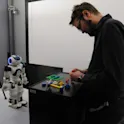
Robotics and AI
29 Aug 2017
New study, published in Frontiers in Robotics and AI, finds that humans prefer interacting with faulty robots more than with flawless robots.
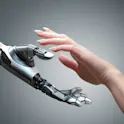
Robotics and AI
27 Jul 2017
Researchers have developed a concept called Empowerment to help robots and humans to work and live side-by-side safely and effectively.

Engineering
20 Jul 2017
New research published in Frontiers in ICT suggests and analyses a possible new principle behind ingredient mixing in traditional cuisines

Engineering
24 May 2017
Professor Krisztian Kordas as the new Specialty Chief Editor of our Translational Materials Science section of Frontiers in Materials.
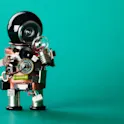
Robotics and AI
04 Apr 2017
For the first time, researchers in the field of evolutionary robotics have used physically embodied robots to study epigenetic effects on robot evolution.

Engineering
16 Jan 2017
Frontiers in Materials is proud to announce the launch of its newest section – Functional Ceramics. Led by Specialty Chief Editor Sheikh Akbar, professor at the Ohio State University, the section aims to publish high quality articles on the processing, structure and properties of ceramic materials and will encompass the whole spectrum of dimensionalities from nanoparticles to bulk ceramic materials. Functional Ceramics will cover ground-breaking advances in design, theory and simulation, and multifunctional performance, as well as multidisciplinary and unique processing, and characterization techniques of ceramic materials. Akbar points to a few the key areas of the section: “One key area of interest involves work on surface patterning of functional ceramics, using novel and inexpensive process pathways that do not require lithography, instead exploiting intrinsic material properties to create oriented and ordered nanostructures represent a paradigm shift in the field of microelectronics, sensor technology, data storage, biotechnology and semiconductor industry. There are opportunities for multidisciplinary studies involving characterization of surface/interface structures and characteristics of gas-solid, liquid-solid interaction, and biological cell attachment and proliferation on the patterned structures. Such studies combined with computer modelling and simulation would aid in the fundamental understanding of the mechanisms allowing process control to create a […]
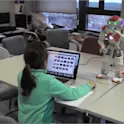
Robotics and AI
04 Nov 2016
By Ian Salter, Frontiers Science Writer The use of robotic tutors in primary school classrooms is one step closer according to research recently published in the open access journal Frontiers in Computational Neuroscience. Dr Imbernòn Cuadrado and his co-workers at the Department of Artificial Intelligence in Madrid have developed an integrated computational architecture (ARTIE) for use with software applications in schools. “The main goal of our work was to design a system that can detect the emotional state of primary school children interacting with educational software and make pedagogic interventions with a robot tutor that can ultimately improve the learning experience,” says Luis Imbernòn Cuadrado. Online educational resources are becoming increasingly common in the classroom, although they have not taken into sufficient account that the learning ability of primary school children is particularly sensitive to their emotional state. This is perhaps where robot tutors can step in to assist teachers. Rather than focusing on specific emotions, the researchers first identified three cognitive states (concentrating, distracted and inactive) known to influence the course of learning. Keyboard strokes and mouse actions of children using educational software were used to predict which of these cognitive states the child is experiencing and subsequently linked […]

Engineering
26 Oct 2016
By Eva Brown, Frontiers Science Writer To help buildings become more resilient to earthquakes, scientists have taken measures to analyze various vibrational modes with the goal of creating safe and sustainable structures for future generations. Professor Izuru Takewaki and his team based at Kyoto University in Japan have centered their studies around the areas of earthquake engineering and the structural design of buildings. They are working towards grasping an understanding of how best to bring resilience in buildings — especially against natural disasters such as earthquakes. Their aim is to create safer and more sustainable constructions. “During Japan’s Tōhoku earthquake and Tsunami in 2011, many people were killed, so I’m working on developing safe designs of buildings,” Takewaki explains. “In my field we are looking at the worst case analysis as you don’t know when, where or how intense a disaster will be. We are also looking at the resilience of the buildings to withstand earthquakes.” In order to set the ground for progress, the team set out to measure the different vibrational states, which would enable them to develop safer building designs that are more stable and structurally secure. This, in turn, will enable the structures to withstand the […]

Robotics and AI
26 Oct 2016
By Srividya Sundaresan, Science Writer Recent research shows brain-to-text device capable of decoding speech from brain signals Ever wonder what it would be like if a device could decode your thoughts into actual speech or written words? While this might enhance the capabilities of already existing speech interfaces with devices, it could be a potential game-changer for those with speech pathologies, and even more so for “locked-in” patients who lack any speech or motor function. “So instead of saying ‘Siri, what is the weather like today’ or ‘Ok Google, where can I go for lunch?’ I just imagine saying these things,” explains Christian Herff, author of a review recently published in the journal Frontiers in Human Neuroscience. While reading one’s thoughts might still belong to the realms of science fiction, scientists are already decoding speech from signals generated in our brains when we speak or listen to speech. In their review, Herff and co-author, Dr. Tanja Schultz, compare the pros and cons of using various brain imaging techniques to capture neural signals from the brain and then decode them to text. The technologies include functional MRI and near infrared imaging that can detect neural signals based on metabolic activity of […]

Robotics and AI
25 Oct 2016
“I still find immersive Virtual Reality as thrilling now as when I first tried it 20 years ago,” writes Professor Mel Slater, Field Chief Editor of Frontiers in Robotics and AI, on his personal blog. Slater, recipient of the IEEE VGTC’s 2005 Virtual Reality Career Award, is ICREA Professor and Head of the Event Lab at Barcelona University and part-time Professor of Virtual Environments at UCL. Here, we talk to him about his research, technical advances and challenges in the field, and how virtual reality can help raise awareness about sustainability and global change. VR as a research tool A major focus of research for Slater and his team is to use VR as a tool in psychology and neuroscience. Many interesting questions can’t be studied in real life, because they are dangerous or distressing to the participants. But in VR, you can safely simulate the situation, and gauge people’s response. For example, “We did a study where we look at (…) an important area in social psychology called the bystander problem: if you see two other people who start fighting, (…) do you run away, do you try to intervene? (…) This is very hard to study in physical reality, but in virtual reality you can.” In […]

Robotics and AI
29 Sep 2016
The nursing assistant for your next trip to the hospital might be a robot. This is the implication of research recently published by Dr. Elena De Momi and colleagues in the open access journal Frontiers in Robotics and AI (Artificial Intelligence).

Robotics and AI
18 Aug 2016
Every year 1,900 new upper-limb amputations occur in Europe, maintaining a population of such disabled persons hovering around 90,000. What can assistive robotics, rehabilitation science and engineering do for these people?
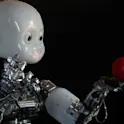
Robotics and AI
16 Aug 2016
Researchers from the Istituto Italiano di Tecnologia put their humanoid robot iCub to the test using manipulation and interaction as sources of knowledge and new experience, as well as, providing a means to explore and control the environment. Read more.

Engineering
07 Jun 2016
Our online browsing behavior leaves a unique digital personality signature which can identify us by Tania FitzGeorge-Balfour, Frontiersin.org Hiding online is harder than you’d think, a new study published on Frontiers in ICT has revealed. Your browsing behavior can indicate your personality and provide a unique digital signature which can identify you, sometimes after just 30-minutes of browsing. “Our research suggests a person’s personality traits can be deduced by their general internet usage. This differs from other studies that have only looked at the use of social media platforms, such as Facebook and Twitter,” said Dr Ikusan R. Adeyemi, a research scholar at the Universiti Teknologi, Malaysia, and lead author of this new study. He continued; “This opens up opportunities for new research into understanding online behavior.” Research linking personality traits to computer usage has typically focused on social media. For example, extrovert people tend to use these platforms to enlarge their boundary of friends and influence, while introvert individuals spend more time on social media to compensate for a probable lack of physical interaction. However, a person’s general online browsing behavior can also reflect their choice, preference and reflexes, which is largely controlled by their unique psychological characteristics. This latest study recruited volunteers […]
Get the latest research updates, subscribe to our newsletter